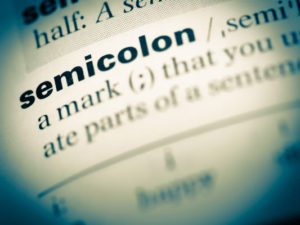
Punctuation Marks: How to Use a Semicolon
Lots of people aren’t sure how to use a semicolon. The semicolon might be the most misunderstood punctuation mark in the English language. This dot-comma combination is often used where a period, colon, or even a plain old comma belongs. Underused and often abused, the semicolon is useful in a number of writing situations. Although…Read More
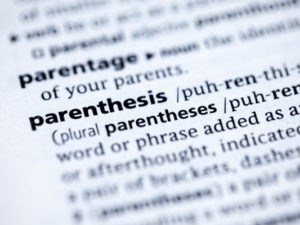
Punctuation Marks: Parentheses
Parentheses are among the most useful and versatile punctuation marks in the English language. They can be used effectively in both formal and casual writing, and the rules surrounding parentheses allow writers to use them for a variety of purposes. They just might be my favorite punctuation marks, simply because they provide a clear way…Read More
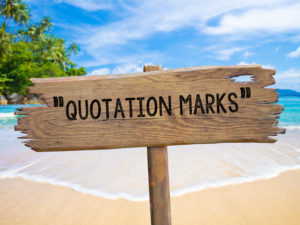
Punctuation Marks: Quotation Marks (in Fiction Writing)
The placement of quotation marks perplexes a lot of people. Do they go inside or outside of other punctuation marks, like periods and commas? Should they be used to set off titles or to emphasize certain words? Are they used for both spoken dialogue and thought dialogue? What about text messages or notes in a novel…Read More
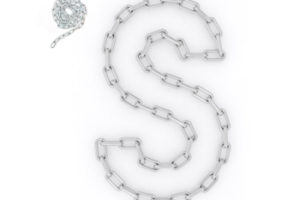
Is It Plural or Possessed? When to Use Apostrophe -S
It’s one of those grammar glitches that makes English teachers twitch, and it’s a perplexing punctuation problem. Knowing when to use an apostrophe and when to use apostrophe -s can be tricky, but this grammar quickie provides all you need to know about plural versus possession when it comes to apostrophe -s. Pluralization You can…Read More
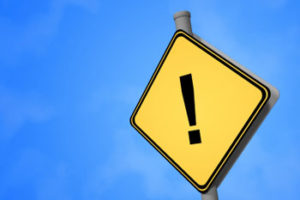
Punctuation Marks: The Exclamation Mark
It’s a relatively simple punctuation mark — a bold one without a lot of confusing rules — yet it’s still grossly overused. It gives our sentences pizzazz. It emphasizes dialogue when one character shouts or snaps at another. And it gives copy editors headaches. The exclamation mark sure packs a punch. The Exclamation Mark! This…Read More
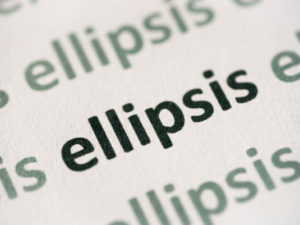
Punctuation Marks: Ellipsis
You see it everywhere, but most people don’t know what it’s called or how to use it properly. In fact, it’s often referred to as “dot, dot, dot” even though it does have a name. This punctuation mark is the ellipsis. It is a series or row of three periods, which is usually used to indicate…Read More
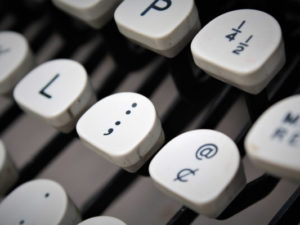
Punctuation Marks: The Colon
The colon is one of the most clearly-defined punctuation marks. It occasionally acts as a stand-in for a comma or period (though when one of these other punctuation marks will do, the colon is unnecessary). Most commonly, the colon functions as an introductory punctuation mark, notifying the reader that the forthcoming information supports, explains, or…Read More
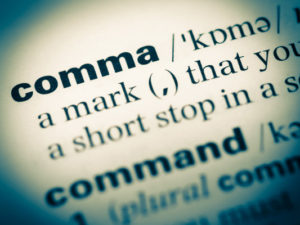
Punctuation Marks: Commas and Clauses
There’s a fine art to using commas. Today we’ll look at how commas work with clauses — both dependent clauses and independent clauses. And don’t worry if you’re not sure which clause is which. Everything will be explained. Independent Clauses and Commas An independent clause can stand alone as a sentence: I watch movies. Two…Read More
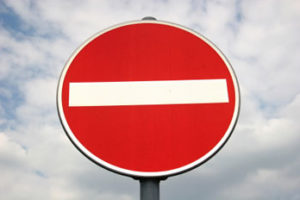
What’s The Difference Between Dashes and Hyphens?
To the passive reader, it’s a short horizontal line that appears somewhere in a text, usually joining two words together. To a writer, it’s something else entirely, but what? Is it a dash, a hyphen, or a minus sign? More than once, I’ve been pecking away at my keyboard and stopped suddenly when confronted with…Read More
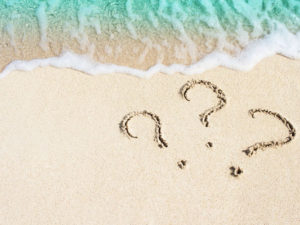
How to Misuse Punctuation Marks
What is it about punctuation marks that cause so many bad sentence constructions? You know the sentences I’m talking about. They’ve got random commas, missing quotation marks, and way too many exclamation points. To make matters worse, some writers break the rules and get away with it while others are chastised for doing (what appears…Read More



